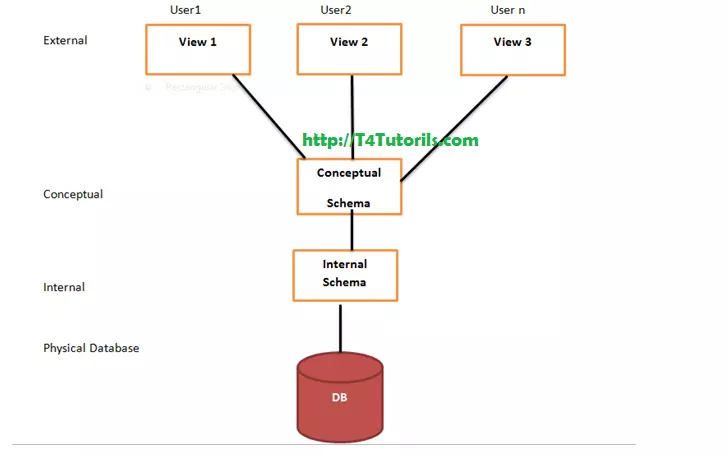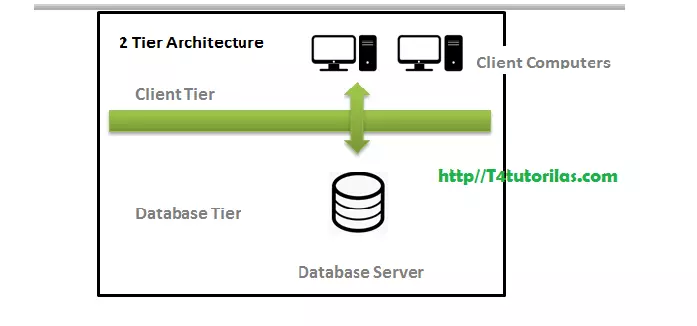3 Tier Database Architecture in DBMS
Database architecture is used to develop specific software by using different programming languages. This software is used by different organizations and companies. The
basic purpose of database architecture is to store and organize data and information for different companies and organizations. It basically focuses on structure development and maintained a computer program.
The basic purpose of database Architecture is to design or develop particular software to fulfill the
needs of users.
Purpose of Database Architecture
The main purpose of Database Architecture is to store or manage data in a proper way. The data or information stored in such a way that easily accessible and easy to maintain.The
Database management gives us a convenient and proper way to manage different databases. It makes sure the availability, security and high performance of data.
The design of a database management system
DBMS base on its architecture. The design of DBMS may be in three forms. It might be centralized or distributed or hierarchical. The architecture of a DBMS might be in a single tier or multi-tier. The tiers are classified as follows:
Development of Database Architecture
The early s standard that used for the development of the architecture is introduced in 1971 by the database task group (DTG).
It used to develop a two-level approach architecture is known as schema and user view and this architecture called sub-schema.
- Types of Database architecture
Three-level architecture
The three-level architecture consists of three-level like external, conceptual and external level. The level where user organized data is called an external view.
The level where the operating system and DBMS differentiate the data is called internal view. Here all the data is stored used different data structure and files.
The conceptual level lies between the internal and external level. It provides the way between them.
Here is the figure showing the of the database system:
Database Architecture

- 1-tier architecture
- 2-tier architecture
- 3-tier architecture
- n-tier architecture
1-tier Database architecture
In 1-tier architecture only one server is used called a single server platform. All the required software and technologies are used on a single server… The 1-tier system is the simplest type of architecture. In which all the components are used on one server. The middle-ware and front hand data stores in a single place. It is very simple and easy to use.
1-tier architecture

2-tier Database architecture
The 2-tier architecture is developed by using Client-Server architecture. All work or communication is done between the client and the server. There is no medium between client and server.
All the communication is directly done between client and server
2-tier architecture

3-tier Database architecture
The 3- tier architecture is consists of three parts. Each part is placed on a specific place in the network. These three parts are as follows;
- presentation layer
- application logic layer
- The database and programming related to managing layer
It is the most widely used architecture to develop database management (DBMS). All the parts of 3-tier are separate from each other. This type of architecture is more complex. This architecture has different uses with different applications. It can be used in web applications and distributed applications. Mostly used in the distributed database system
The three basic part of the 3-tier architecture is as follow.
Database Tier or data:
At this tier, the relationship between data and its constraints. And we also define the database with its query language.
Application or Middle Tier
In this stage, we define the application server and all programs that access the data. For a user, this application tier provides an abstracted view of the database. End-users did not know about the existence of the database. At the other end, the database tier is not aware of any other user beyond the application tier. In this way, the application layer acts as a medium between database and user.
User (Presentation) Tier
In these parts, the user also unaware about the existence of any database .at his level many views of the database is provided by the application.
n-tier Database architecture
N-tier architecture divides an application layer int
o three types. These would be the
- logic tier,
- the presentation tier, and
- the data tier.


